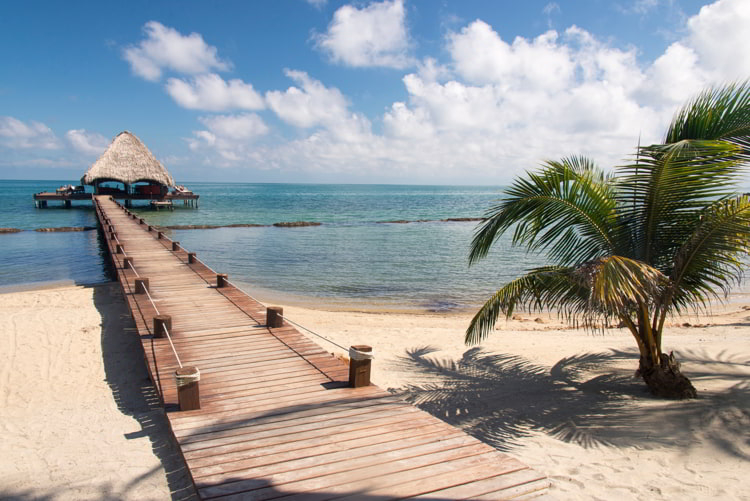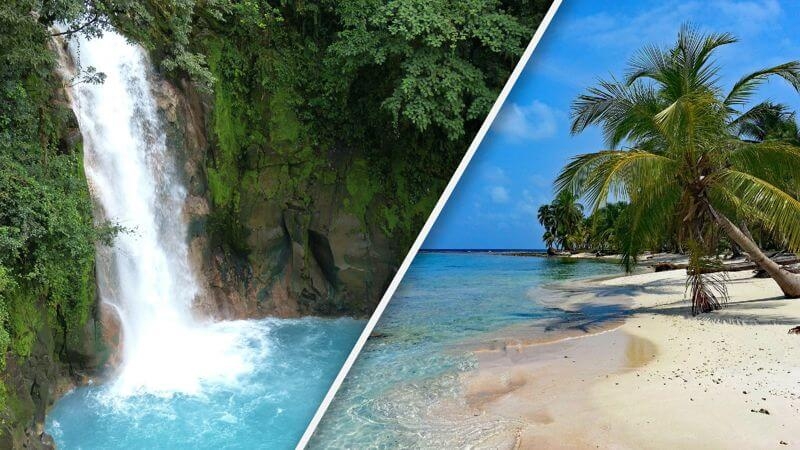Infrastructure In Costa Rica- FAQs
Yes. Costa Rica is now more flexible in terms of its tourist visa policies, doubling the amount of time that visitors can stay here without a visa from three to six months.
Top Destinations:
Whether you’re looking for fun and sun, a peaceful retirement, or the chance to earn some extra income, you’ve got a real world of opportunity open to you… In short, we’ve done our best to narrow down your best options, but only you can decide the right country for you.
Best For:
How Much Will It Cost You To Live Overseas?
The only honest answer is, we have no idea. And neither does anyone else. The only one who can answer that question is you. Here’s the most important thing to understand about budgeting your new life overseas…
Follow Us:
Join our Weekly Newsletter
Overseas Property Alert
Sign up for our weekly newsletter to receive expert insights on the best international real estate investment opportunities.
Upcoming Events
Live and Invest In Spain Conference
Offshore Wealth Summit
Greece Workshop
VALENCIA, SPAIN
Sep. 17-19, 2025
PANAMA CITY, PANAMA
Oct. 15-17, 2025
VIRTUAL
Nov. 13, 2025
Contact Our Events Team
Reach us with your questions by email at: events@liveandinvestoverseas.com
Unlock The World
Overseas Havens Reports
Conference Kits
Lahardan Books
Our Customer Service team is here to assist with any questions or concerns CustomerService@LiveandInvestOverseas.com
Top Destinations:
Whether you’re looking for fun and sun, a peaceful retirement, or the chance to earn some extra income, you’ve got a real world of opportunity open to you… In short, we’ve done our best to narrow down your best options, but only you can decide the right country for you.
Best For:
How Much Will It Cost You To Live Overseas?
The only honest answer is, we have no idea. And neither does anyone else. The only one who can answer that question is you. Here’s the most important thing to understand about budgeting your new life overseas…
Follow Us:
Join our Weekly Newsletter
Overseas Property Alert
Sign up for our weekly newsletter to receive expert insights on the best international real estate investment opportunities.
Upcoming Events
Live and Invest In Spain Conference
Offshore Wealth Summit
Greece Workshop
VALENCIA, SPAIN
Sep. 17-19, 2025
PANAMA CITY, PANAMA
Oct. 15-17, 2025
VIRTUAL
Nov. 13, 2025
Contact Our Events Team
Reach us with your questions by email at: events@liveandinvestoverseas.com
Unlock The World
Overseas Havens Reports
Conference Kits
Lahardan Books
Our Customer Service team is here to assist with any questions or concerns CustomerService@LiveandInvestOverseas.com
THE 10 BEST PLACES TO RETIRE IN 2025

PLUS: A SPECIAL BONUS DESTINATION
We Value Your Privacy! We will not share your email address with anyone else, period.
Home » Best Countries To Live, Invest, And Retire Overseas » Costa Rica » Infrastructure In Costa Rica
The infrastructure in Costa Rica today is almost no better than when it rolled out the foreign retiree welcome mat all those years ago.
Learn more about this and other countries in our free, daily Overseas Opportunity Letter. Simply enter your email address below and we’ll send you our FREE REPORT: The 10 Best Places To Retire In 2025

The infrastructure in Costa Rica today is almost no better than when it rolled out the foreign retiree welcome mat all those years ago. Infrastructure has not met economic growth numbers. Ineffective and insufficient maintenance and investment efforts are the main offenders.
According to the most Global Competitiveness Report published by the World Economic Forum in 2018, Costa Rica ranks at position 54 out of 138 countries. That’s not a bad number, but it shows it still lags behind of other countries in the region like Panama (42), Chile (33), and Mexico (51).
It’s ranking for infrastructure is 67th, up 4 places since last year. Infrastructure was the 5th worst performing score for Costa Rica, the lowest being it’s market size (83rd place).

Reviewed By Lief Simon
Lief Simon is the managing editor of Global Property Advisor, Simon Letter, and Offshore Living Letter. He has purchased more than 45 properties, investing in 23 different countries around the world.
Start Your New Overseas Life Today
A world full of fun, adventure, and profit awaits! Sign up for our free daily e-letter, Overseas Opportunity Letter, and we’ll send you a FREE report on the 10 Best Places To Retire In Style Overseas Today 2024
We Value Your Privacy! We will not share your email address with anyone else, period.
Transportation is a major concern of infrastructure in Costa Rica today. There’s an ongoing debate that the government must promote private investment to keep up with the country’s growth, and not all people share that vision.
Still, there are strong promoters of the private investment movement, and Costa Rica is slowly developing their transportation services.
the road network is substantial, with more than 35,330 kilometers (21,953 miles) of roads, but many of them are in poor conditions, and only 8,621 kilometers (5,357 miles) are paved. There are projects set to reinforce road systems, but the low investment of the government is insufficient to support the demand.
When considering living in Costa Rica, driving can be crucial in order to get around towns and cities. Normally, an SUV or some other type of off-road vehicle is recommended to navigate Costa Rica’s roads. Roads are in so bad shape, in fact, they rank as 125th for Quality of Roads under the infrastructure category.
Particular concerns include narrow roads, potholes, and unpaved roads. Reckless driving is present here as well as most of Latin America, so driving defensively is paramount. Still, driving should be your first option for transport.
In Costa Rica, you get the perk of using your national driver’s license for up to three months since arriving. After that, expats can apply for a local license, the process being simple and very affordable.
Basically, this is why we recommend having your own car. Public transportation infrastructure can be resumed as quite painful. San José is the transportation hub of the country, but there’s no central bus terminal.
Offices lay around the city, and while they are cheap, the service is not first-rate. They are reliable, though, and the longest national route costs less than US$20. The further you are from San José, the fewer transportation you find.
There are two types of buses: colectivo, and directo. Colectivos are cheaper but make stops along the way, while the directos don’t. Trips usually have rest stops if there are more than for 4 hours because buses don’t have toilets.
Taxis in San José have marías, also known as meters, and it is illegal for the drivers not to use them.
Yet, outside the capital, most taxis don’t have meters and you will have to engage in bargaining.
Be ready to fend off the “gringo prices”.
Domestic flights are relatively cheap and offer a more convenient way of traveling to remote areas.
There are 48 main airports, only 4 being international. Two of them are in San José, while the other two are in Limón and Guanacaste.
For many years, the whole phone and internet service was under the control of the Instituto Costarricense de Electricidad (ICE). But with the Central American Free Trade Agreement taking hold, that was no more.
Internet adoption was fast after the change of millennia, and while certainly not at the level of first world countries, internet service is found nationwide.
One of the most asked questions by retirees can be: “Is there going to be reliable internet connection there?” The answer depends on whether you need exceptional internet speed and reliability.
Near the main cities, you can get high-speed internet that may be almost on par as back in the states, for a price.
As of 2024, most internet service companies offer plans that range from as low as 2 megabytes per second of download speed, all the way to 100mb/s. It should be easy to get a plan for less than US$30 a month.
Regarding reliability, the quality of service depends on how close you are to the metropolitan areas. Normally, the service is quite reliable.
You might experience one to two outages every now and then, and they are generally fixed quickly. The only way this deal would be a no-go for you depends on if you simply cannot have downtime.
While being in Costa Rica, it is advisable to buy a local SIM card and use it with your unlocked phone from the states.
Roaming services can be as costly as $4 per second. However, many local companies offer international calls at much better prices.
The service also can get from spotty to non-existent if you are venturing to rural areas.

Reviewed By Lief Simon
Lief Simon is the managing editor of Global Property Advisor, Simon Letter, and Offshore Living Letter. He has purchased more than 45 properties, investing in 23 different countries around the world.
Start Your New Overseas Life Today
A world full of fun, adventure, and profit awaits! Sign up for our free daily e-letter, Overseas Opportunity Letter, and we’ll send you a FREE report on the 10 Best Places To Retire In Style Overseas Today 2024
We Value Your Privacy! We will not share your email address with anyone else, period.
Yes. Costa Rica is now more flexible in terms of its tourist visa policies, doubling the amount of time that visitors can stay here without a visa from three to six months.
 . '
. '
 . '
. '
 . '
. '
 . '
. '


We Value Your Privacy! We will not share your email address with anyone else, period.
As seen in

© 2008 – Live and Invest Overseas™ – All Rights Reserved.
Top Countries
Budgets
Affordable
Resources
Real Estate
Overseas Property Alert
How To Become Independently Wealthy And Fund The Lifestyle Of Your Dreams
Buying Real Estate For Cashflow
Discover tips and strategies used by global property investing veterans
Explore Our Latest Posts
Learn how to invest and purchase property abroad…
Conferences
Live and Invest In Spain Conference
Offshore Wealth Summit
GREECE WORKSHOP
Contact Our Events Team:
Toll-Free U.S. and Canada:
1 (888) 627 8834
From Outside North America:
1 (443) 599 1221
Working Hours
Monday – Friday 08:00 am – 17:00 pm EST.
Reach us with your questions by email at: events@liveandinvestoverseas.com
Store
Overseas Havens Reports
Conference Kits
Lahardan Books
Services
Free Report
THE 10 BEST PLACES TO RETIRE IN 2025

Sign up to receive the FREE daily e-letter, Overseas Opportunity Letter and we’ll immediately email you our editors’ latest research report…
We Value Your Privacy! We will not share your email address with anyone else, period.
Follow Us:
© 2008 - Live and Invest Overseas - All Rights Reserved.
RETIRE OVERSEAS AND LIVE LIKE ROYALTY
Sign up for FREE to learn how. Plus, check out our FREE report on THE 10 BEST PLACES TO RETIRE
RETIRE OVERSEAS AND LIVE LIKE ROYALTY
Sign up for FREE and learn how to live the good life on a modest budget, find bargain property, and more. Plus, check out our free report on the 10 BEST PLACES TO RETIRE.
We Value Your Privacy! We will not share your email address with anyone else, period.